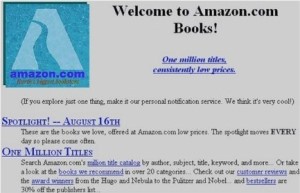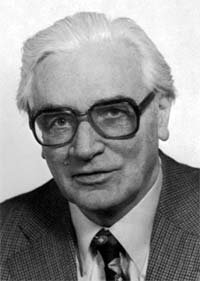Computer history - 1995
Major computer events in 1995

The dot-com boom started.
Netscape introduced SSL (secure sockets layer) in February 1995.
On December 4, 1995, Sun Microsystems announced JavaScript and released it in Netscape 2.0B3. In the same year, they also introduced Java.
PHP (PHP: Hypertext Preprocessor) was publicly released on June 8, 1995.
On July 14, 1995, Karlheinz Brandenburg sent an e-mail announcing the .mp3 file extension had won a poll and announced that the old .bit file extension should no longer be used.
Artificial Intelligence: A Modern Approach by Peter Norvig and Stuart Russell was published. In the ensuing decades, it became the authoritative textbook on the subject.
1995 computer and technology top terms
The following are some top computer and technology-related terms in alphabetical order that were introduced or popularized in 1995.
New computer products and services introduced in 1995

Code-named Utopia, Microsoft Bob was introduced to the public on January 5, 1995, at the CES (Consumer Electronics Show) by Bill Gates.
Perl 5.001 was released on March 13, 1995.
The Opera browser version 1 was released on April 1, 1995.
Microsoft Windows NT 3.51 was released on May 30, 1995.
Intel released a new motherboard form factor called ATX (advanced technology extended) in July 1995.
Microsoft released Visual Basic 4.0 in August 1995.

Microsoft released Internet Explorer 1.0 on August 16, 1995.
Microsoft released Windows 95 on August 24, 1995, and sold over 1 million copies within four days.
Command & Conquer was released by Westwood Studios on August 31, 1995, and was one of the earliest real-time strategy games. It was released for multiple platforms, including the PC, Mac, PlayStation, Nintendo 64, and Sega Saturn. Its popularity and success were the reason for the general popularity of the real-time strategy game genre. The Command & Conquer series was awarded six world records in the Guinness Book of World Records: Gamer's Edition 2008, including "Biggest Selling RTS Series."
The Need for Speed was released for the PC on August 31, 1995.
Microsoft Fury 3 was released on August 31, 1995.
The BCP (Best Current Practices) was first described in RFC 1818 in August 1995.
HP (Hewlett-Packard) released the HP 4020i in September, the first sub $1,000.00 CD-R (compact disc recordable).
Microsoft released DirectX 1.0 (4.02.0095) on September 30, 1995.
CPAN (comprehensive Perl archive network) was introduced on October 26, 1995.
Intel introduced the Pentium Pro processor, the first to use P6 microarchitecture, in November 1995.
Classmates was released on November 17, 1995.
Microsoft released Internet Explorer 2.0 on November 22, 1995, and officially started the browser war with Netscape.
GIMP (GNU image manipulation program) was released on November 22, 1995.
Alicebot was created by Richard Wallace on November 23, 1995.
Realtek developed and announced the first surround sound chip, the ALS100, in October 1995.
Microsoft released Excel 95 in 1995.
Microsoft released Word 95 in 1995.
Dan Farmer and Wietse Venema released SATAN (Security Administrator Tool for Analyzing Networks) programming language.
The first Wiki was created in 1995.
vCard was introduced by versit in 1995.
Cygnus Solutions released Cygwin in 1995.
Computer scientist Matthias Felleisen created the Racket programming language.

IBM introduced the butterfly keyboard with the IBM 701 laptop in 1995.
Intel introduced PAE (Physical Address Extension) with the Intel Pentium Pro and the SMBus.
Many of the first online shopping websites utilized Intershop Online, an online shopping software system, developed in 1995 by Intershop Communications AG.
The Iomega Jaz drive was introduced in 1995.
Blizzard released WarCraft II, a squeal to the popular WarCraft game, in 1995.
DSVD (Digital Simultaneous Voice and Data) was released in 1995.
CD-E (CD erasable) was introduced to the general public in 1995.
Mail.com came online in 1995.
The free and open-source e-mail client Mutt was released in 1995.
NumPy (originally known as numeric) was introduced in 1995.
De Raadt parted ways with NetBSD in 1995, forking the NetBSD 1.0 code and continuing its development under the name OpenBSD.
PCI (peripheral component interconnect) 2.1 was introduced in 1995.
Ruby was released in 1995.
S-HTTP (Secure HTTP) was introduced in 1995.
EDO (extended data out) memory was introduced in 1995.
Apple developed FireWire in 1995.
The first SSD (solid-state drive) as we know them today was developed by SanDisk Corporation in 1991, with a storage capacity of 20 MB. However, this was not a flash-based SSD, which was introduced later in 1995 by M-Systems.
UDF (Universal Disk Format) was introduced by OSTA (Optical Storage Technology Association).
The final major release of Ultrix (version 4.5) was released in 1995.
IBM unveiled 12 new System/390 Parallel Enterprise Server models, which all use CMOS (complementary metal-oxide semiconductor) based processors.
IBM scientists created a new optical microscope capable of seeing objects 500 times smaller than previously possible with conventional optical microscopes. The microscope provides an unprecedented 1 nanometer resolution, about five times larger than an individual atom.
Computer and technology-related events in 1995
Apple allowed other computer companies to clone its computer by announcing it was licensing the Macintosh operating system rights to Radius on January 4, 1995.
Computer hacker Kevin Mitnick was arrested by the FBI on February 15, 1995.
MySQL was introduced on May 23, 1995.

One of the largest and well-known e-commerce sites today opened its website for the first time. Amazon.com was officially opened on July 15, 1995.
The first macro virus, Concept, was accidentally released on the Microsoft Compatibility Test CD (compact disc) and discovered in July 1995.
On September 20, 1995, AT&T split into three publicly traded companies: a systems and equipment company, a computer company, and a communications services company.
On October 16, 1995, the first recorded use of the term spyware was used in a Usenet post poking fun at Windows 95 source code.
The first computer network wiretap was authorized on October 23, 1995, and led later to the arrest of Julio Cesar Ardita.
Microsoft released Internet Explorer 2.0 on November 22, 1995, and officially started the browser war between Netscape.
HTML (hypertext markup language) 2.0 standard was published in RFC 1866 on November 24, 1995.
IBM unveiled Deep Blue on December 5, 1995, a parallel computing system that would later play the World Chess Champion Garry Kasparov.
Internet search engine AltaVista launched on December 15, 1995.
Larry Page and Sergey Brin began developing a search engine called BackRub with PageRank, an important technology that became an important part of Google.
The first VoIP (Voice over Internet Protocol) software, Vocaltec, was released, allowing end users to make voice calls over the Internet.
The first E3 was held in Las Vegas, Nevada in 1995.
Livescript was renamed to JavaScript in 1995.
Sean Carton first used the term "egosurfing" in a column for Wired magazine in 1995.
The Data Protection Directive was adopted by the European Union.
The Curry programming language was introduced by Michael Hanus, Herbert Kuchen, and Juan Jose Moreno-Navarro.
The IFComp (Interactive Fiction Competition) open competition of interactive fiction stories organized by Stephen Granade, started in 1995.
NetDay was proposed in 1995.
John Warnock and Allan Padgett at Adobe created the Netscape Plugin Application Programming Interface.
NSF removed the NSFNET (National Science Foundation Network) from the Internet on April 30, 1995, but continued as a separate network for further research and development.
The computer book The Road Ahead by Bill Gates was published in 1995.
The computer book The Mythical Man-Month: Essays on Software Engineering by Frederick Brooks was published in 1995.
Vermeer Technologies Incorporated introduced the WYSIWYG (what you see is what you get) HTML editor FrontPage, which would later be purchased by Microsoft and released as part of its Office suite.
IBM scientists completed a two-year calculation, the largest single numerical calculation in the history of computing, to pin down the properties of a particle called a "glueball."
Computer companies and organizations founded in 1995
EPoX was founded in February 1995.
eBay was founded by Pierre Omidyar on September 3, 1995.
Asix was founded in 1995.
Audible was founded in 1995.
AboCom was founded in 1995.
Martins Saulespurens and Skipper Wise founded Baltic Latvian Universal Electronics (Blue) in 1995.
Centaur Technology was founded in 1995.
Craig Newmark started Craigslist in 1995.
ESIO Audio was founded in 1995 by Chess Lim.
Global Village was founded in 1995.
Harmony Technology Services was founded in 1995.
HighPoint Technologies was founded in 1995.
Hotmail was started in 1995 by Jack Smith and Sabeer Bhatia.
IDrive was founded in 1995.
Colorful was founded in 1995.
MARGI was founded in 1995.
Marvell Semiconductor was founded in 1995.
Matsonic was founded in 1995.
Ahead Software was founded in 1995 by Richard Lesser. Today, the company is known as Nero.
The Norway's telecom company branched out the independent development company named Opera Software ASA in 1995.
Real was founded in 1995.
SegaSoft was founded in 1995.
Silicon Image was founded in 1995.
Transmeta was founded in 1995.
Tundra was founded in 1995.
Verisign was founded in 1995.
WebTV Networks was founded in 1995.
Computer company events in 1995
Yahoo! was incorporated on March 1, 1995.
Paradise was acquired from Western Digital on October 31, 1995.
O'Reilly Media sold the Global Network Navigator ("GNN") to AOL (America Online).
U.S. Robotics purchased Palm and began the PalmPilot product line.
Lotus became a part of IBM in 1995, making IBM the world's largest software company.
Netscape went public at $28.00 a share and by the closing ended at $58.00 a share.
Microsoft and General Electrics NBC television network form a partnership.
SCO acquired Unix System source technology business from Novell Corporation. SCO also acquired UnixWare 2 operating system from Novell.
The Learning Company was acquired by Softkey for $606 million in 1995.
Turtle Beach Systems merged with Voyetra in 1995 to form Voyetra Turtle Beach Inc.
Internet domains that came online in 1995
The Yahoo.com domain was registered on January 18, 1995.
The domain ebay.com came online on August 4, 1995.
Computer-related TV shows and movies released in 1995
The movie 'The Net' with Sandra Bullock was released on July 28, 1995.
The movie Hackers was released on September 15, 1995.
The Toy Story was released on November 22, 1995, becoming the first movie that was completely computer-generated.
Discontinued products and services in 1995
The last MSX computer was manufactured in 1995, ending with the MSXturboR.
Computer pioneer deaths in 1995

Allen Coombs passed away on January 30, 1995 (Age: 84).
George Stibitz passed away on January 31, 1995 (Age: 91).
John Adam Presper "Pres" Eckert, Jr. passed away on June 3, 1995 (Age: 76).
John Vincent Atanasoff passed away on June 15, 1995 (Age: 91).
Alonzo Church passed away on August 11, 1995 (Age: 92).
Gerard Salton passed away on August 28, 1995 (Age: 68).
Konrad Zuse passed away on December 18, 1995 (Age: 85).
Arnold I. Dumey passed away in 1995.
